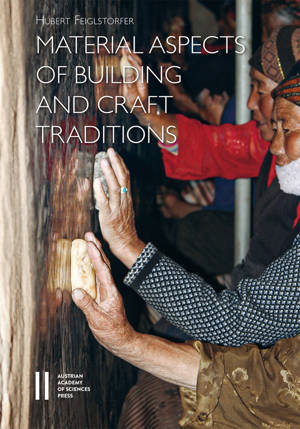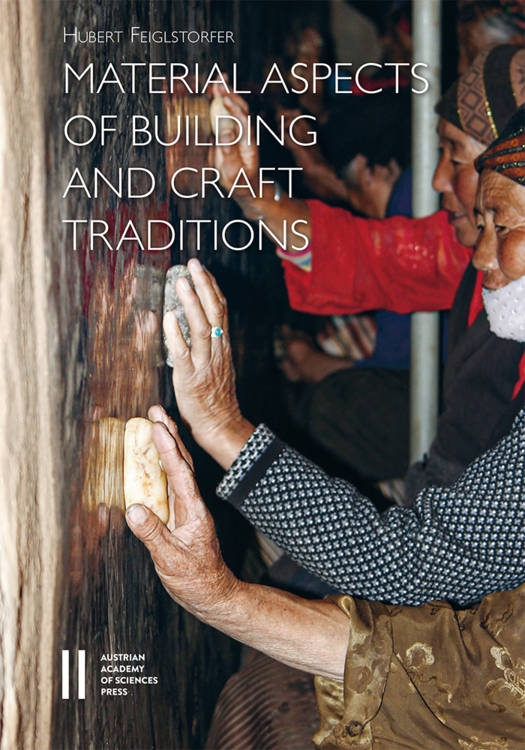
- Afhalen na 1 uur in een winkel met voorraad
- Gratis thuislevering in België vanaf € 30
- Ruim aanbod met 7 miljoen producten
- Afhalen na 1 uur in een winkel met voorraad
- Gratis thuislevering in België vanaf € 30
- Ruim aanbod met 7 miljoen producten
Zoeken
Material Aspects of Building and Craft Traditions
Spatial Programme - Building Material - Natural Environment. a Himalayan Case Study
Hubert Feiglstorfer
Hardcover | Engels | Veröffentlichungen zur Sozialanthropologie | Denkschriften der Philosophisch-Historischen Klasse | nr. 26
€ 261,45
+ 522 punten
Omschrijving
The manual production of objects and buildings significantly shapes the material culture of societies. Knowledge concerning the ideal properties of materials obtained from nature, techniques of processing raw materials, and the skills needed to manufacture certain products have been passed down from generation to generation over the centuries. Many buildings, as well as objects in daily use, which we consider cultural heritage today, have their origin in the skills of crafts(wo)men and the craft traditions to which they belong. In contrast to workers in the industrial prefabrication of products, crafts(wo)men have to be able to react flexibly to different natural conditions. The properties of naturally occurring raw materials such as clay, stone or wood can vary greatly. Crafts(wo)men must constantly draw upon and adapt the knowledge, skills and techniques they have learned in order to optimize the quality of their products. The author of this book is an architect and architectural historian, which is why his research makes strong reference to craft traditions in construction. In addition, he researches building materials, their properties and processing methods, with a focus on clay and clay building techniques. Bringing these main research areas together enables the observation of building craft traditions from different perspectives. The social status of materials and processing methods can differ greatly between societies. This book focuses on Buddhist architecture in the Himalayas, where the author has been conducting research for over 20 years. Certain behavioral patterns, such as ritually walking around the perimeter of religious buildings and objects, reinforce their symbolic value in the respective community. These meanings, in turn, are made tangible through certain materials, shapes, colors, or textures used in the buildings themselves. In the course of the research, it became clear that particular traditional processing methods can be found in various craft disciplines. For example, the method of polishing roofs or walls is used in the manufacture of certain religious objects such as clay sculptures, and also in the manufacture of everyday objects such as clay ovens or pottery. Traditional knowledge about such processing methods is spread over large parts of the Himalayas and is regionally adapted to the respective crafts. The Himalayan region is ideal for this research due to its diverse natural conditions. Different altitudes, topographies, vegetation, climatic and geological conditions have shaped building and handicraft traditions across this region. This book clearly shows connections between natural conditions and regional building and craft traditions, as well as their combined influence on material culture in the Himalayas.
Specificaties
Betrokkenen
- Auteur(s):
- Uitgeverij:
Inhoud
- Aantal bladzijden:
- 417
- Taal:
- Engels
- Reeks:
- Reeksnummer:
- nr. 26
Eigenschappen
- Productcode (EAN):
- 9783700182184
- Verschijningsdatum:
- 29/07/2022
- Uitvoering:
- Hardcover
- Formaat:
- Genaaid
- Afmetingen:
- 212 mm x 28 mm
- Gewicht:
- 1537 g

Alleen bij Standaard Boekhandel
+ 522 punten op je klantenkaart van Standaard Boekhandel
Beoordelingen
We publiceren alleen reviews die voldoen aan de voorwaarden voor reviews. Bekijk onze voorwaarden voor reviews.








